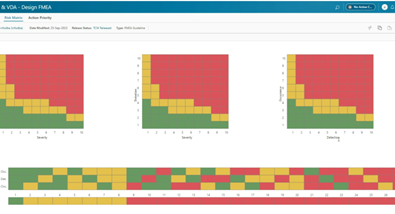PLM ALM Integration using Teamcenter Linked Data Framework

PLM ALM integration is a challenge because domains use diverse tools, processes, and practices. Can these domains collaborate given these constraints?

Let us consider a typical scenario that occurs in the automotive business. Reports from the field indicate that the power window system in a particular car model has a defect. The anti-pinch feature does not work all the time. Customer service files a high priority incident report.
Representatives from different engineering teams meet and try to find the root cause of the problem. The problem may be due to hardware failure such as a stuck button, it can be in the embedded software, or it can be a combination of hardware-software. Each team analyzes the problem using their tools and processes but when these teams need to coordinate what do they do?
The biggest worry for engineers, when they work with different teams, is that the practices, processes, and tools they use are diverse. How do they ensure that teams effectively collaborate without losing the processes and systems that work well for them?
In this post, we will explore how hardware (PLM domain) and software (ALM domain) teams work together to solve the power window problem. The automotive company in our example uses Linked Data Framework (Customer Only Access) to integrate and collaborate across domains. It is an integration framework to integrate different enterprise information systems such as Product Lifecycle Management (PLM) systems and Application Lifecycle Management (ALM) systems.
This framework follows these principles for the PLM ALM integration:
- Don’t migrate or duplicate data from applications but maintain meaningful relationships across these data.
- Don’t force ALM engineers to understand PLM concepts but create similar artifacts that are relevant for their domain and use cases.
- Integrate workflows across applications.
- Allow users to view and author data in their application.
- Use open systems and techniques such as linked data, HTTP, REST to integrate different systems.
When Linked Data Framework is used, the change management process that the PLM and ALM domain uses to fix the power window problem looks as follows:
The arrows in the graphic show the connection or integration between the two domains. These connections are in the form of HTTP links. These links also provide other integration opportunities such as workflow co-ordination and customizations using REST APIs.
PLM ALM integration using Linked Data Framework helps with the following business problems:
- How do you implement a process such as change management across different domains such as PLM and ALM?
You can create links between parts of a process, such as between a change request in PLM and a defect in ALM. You can also extend Linked Data Framework to enhance its capabilities. - How do you avoid creating new applications, and avoid user training?
Using UI-based services, you can reuse existing user interfaces, validation, and business rules from the external application. - How do you enable ALM users to access PLM data without learning PLM concepts or new tools?
You can use your tools you are familiar with and use UI-based services to view PLM data.
In this post, we explored how PLM ALM integration occurs using Linked Data Framework. Since this integration links data resources, you avoid the cost of duplication, new systems, processes and other associated costs involved with a traditional data integration approach. Your users collaborate across teams while still working with applications and processes they are familiar with. So are you still debating PLM ALM integration? Why not try Linked Data Framework and improve your product and software development?
Watch this video to learn more:
ALM PLM integration: Why it Matters for Multi Domain Engineering
About the Author:
Jatish Mathew writes technical documentation for Siemens PLM products. He loves to deconstruct PLM ideas and explain it as simply as possible.


